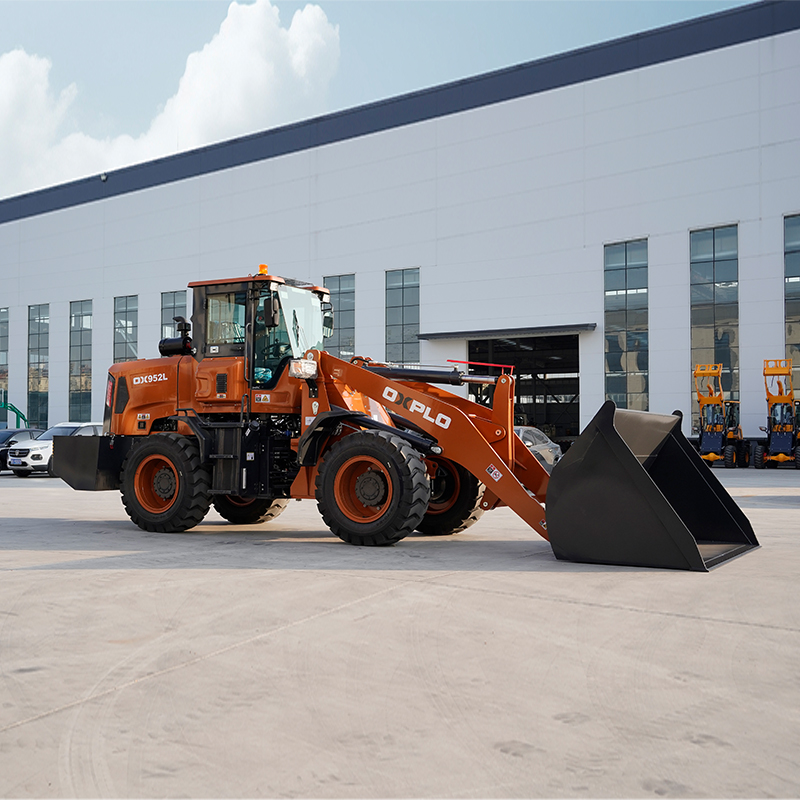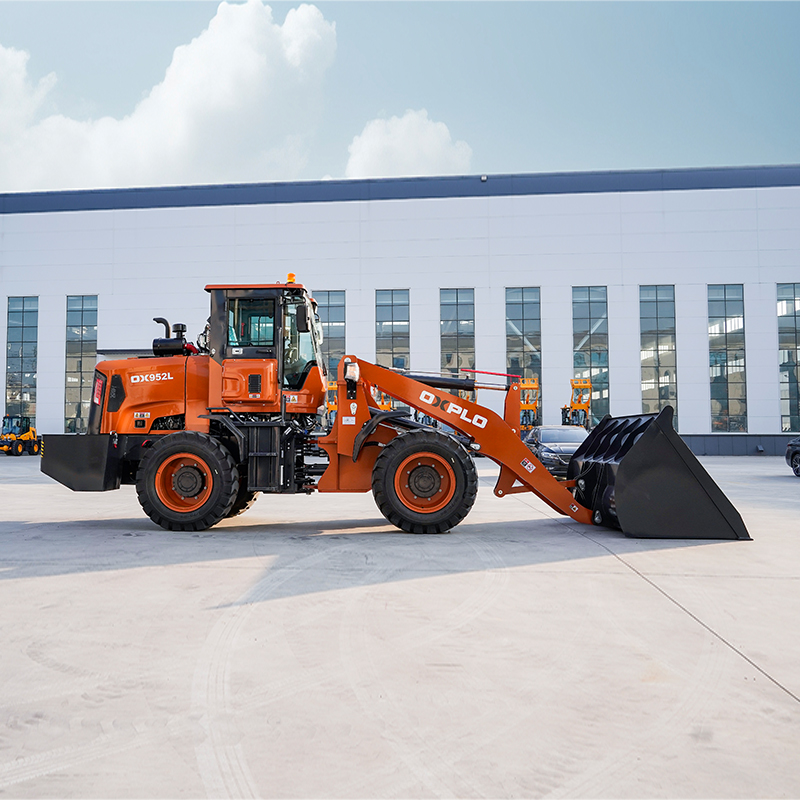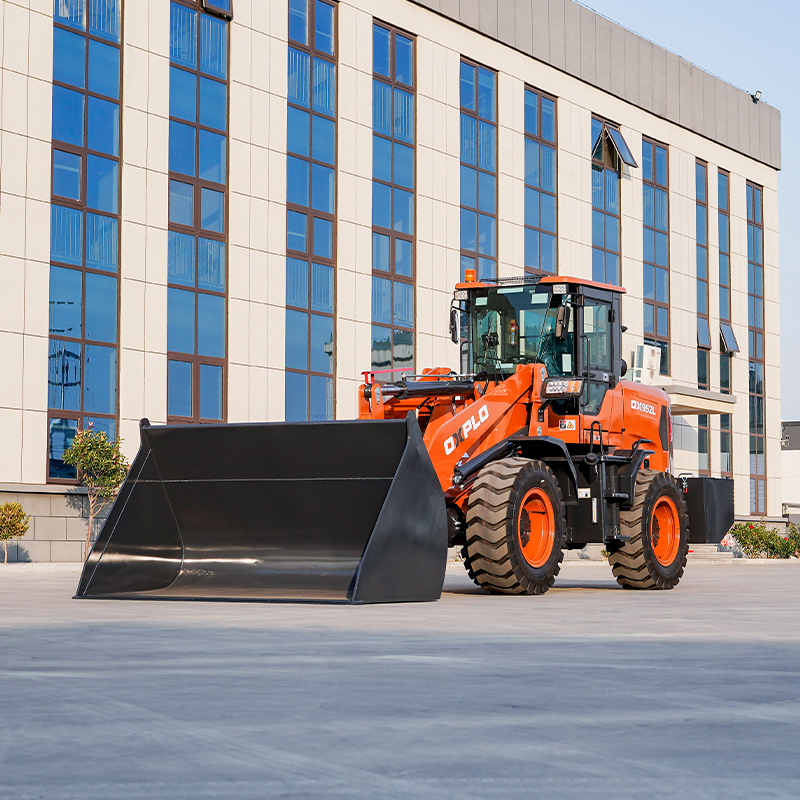Precautions for safe operation of wheel loaders
2024-06-21
When we buy wheel loaders, we must understand some precautions about operating wheel loaders, which can not only help us better operate wheel loaders, but also improve work efficiency and reduce downtime. Good operating habits will also extend the service life of wheel loaders. OXPLO brand is a professional manufacturer of wheel loaders factory, we are very familiar with the structure and driving skills of the loader, let's understand the precautions for driving wheel loaders.

1. Preparation: Before starting to operate the loader, make necessary preparations. Check that the functions and safety equipment of the machine are working properly, such as lights, brakes, steering, etc. Make sure the tires are properly inflated and check the levels of oil, lubricant and coolant.
2. Touch and reaction: familiar with the touch and reaction of the control rod and control handle of the loader. Understand the function and operation of each lever. Carry out adaptive exercises before the actual operation to familiarize yourself with the control operation and the loader's response.
3. Tire selection and maintenance: Select the type of tire suitable for the current working environment and ground conditions. Make sure the tire pressure is appropriate and pay attention to tire wear. Regular inspection of tire wear and damage, and timely replacement of severely worn tires.
4. Load control: When loading and unloading goods, pay attention to the balance and stability of the control load. The goods are evenly distributed in the loading bucket to avoid too high or too heavy loading, so as not to affect the stability of the loader.
5. Turn and tilt: When turning, pay attention to the tilt of the loader. Avoid international turns and rolling at high speeds. Reasonable control of turning radius to ensure that the loader is stable when turning.
6. Height and distance sense: familiar with the size and operating space of the loader, and master the height and distance sense of the loading bucket and other devices. Pay special attention to avoid collisions with obstacles such as buildings, power lines, and trees.

7. Emergency stop and emergency situations: In emergency situations, it is necessary to be familiar with and able to quickly use the emergency stop loading of the loader. Learn how to operate and respond to emergencies in order to reduce potential harm.
8. Cooperation with other personnel: Maintain good communication and coordination with other personnel on the job site. Use standard signals and gestures to maintain effective communication with commanders and other staff to ensure safe and efficient operations.
9. Operation under unsuitable conditions: Avoid operating the loader under adverse weather conditions (such as heavy rain, snowstorm) or unsuitable ground conditions, in these cases, reduce the driving speed, increase alertness, and take appropriate safety measures as necessary.
10. Continuous learning and training: regularly attend training courses on loader operation and safety, maintain an understanding of the criminal operating procedures and safety standards, and constantly learn and improve their skills and knowledge to improve the safety and effectiveness of the operation.

In addition to these precautions, what are the good habits of driving wheel loaders worth learning?
1. Stay focused and alert: When driving a wheel loader, always stay focused and alert, focus on the operation and the surrounding environment, and avoid being distracted or disturbed by other factors. Always observe the situation ahead, behind and on the side, and always be ready to respond to unexpected situations.
2. Comply with the safe speed limit: choose the appropriate driving speed according to the working environment and terrain conditions. Observe the speed limit specified on site and avoid speeding. Moderate deceleration can improve operational stability and responsiveness, reducing the risk of accidents.
3. Smooth operation and turning: avoid sudden braking, rapid acceleration and sharp turning. Smooth and consistent operation to ensure the stability and balance of the loader, when turning, the use of appropriate turning radius and speed, to avoid excessive roll.
4. Good sight and proper use of mirrors: Maintain good sight and ensure clear front and surrounding vision. Use mirrors such as rear-view mirrors and side-view mirrors to observe the rear and side in time, and adjust the Angle and position of the mirror to minimize the blind area.
5. Correct use of brakes: Correct use of the loader's brakes, including brakes and parking brakes. Use the brake when appropriate to avoid overuse or sudden release of the brake. When parking the loader, use the parking brake and take appropriate safety measures to prevent sliding or movement.

6. Reasonable control of the loading bucket: familiar with the operation control rod and button of the loading bucket, so as to reasonably control the lifting of the loading bucket. Tilt and spin. When loading and unloading the goods, master the correct skills and operation sequence to ensure the stability of the goods and the balance of the loader.
7. Respect and comply with the rules of the work area: comply with the safety regulations of the site and work restrictions. Avoid entering prohibited or dangerous areas, follow signs and instructions, and communicate effectively with other personnel to ensure coordination and safety.
8. Regular maintenance and maintenance: regular maintenance and maintenance of the loader, including the replacement of lubricating oil, hydraulic oil and filter. Timely repair and replacement of worn parts to ensure that the loader is in good working condition.
9. Continuous learning and training: Participate in loader operation and safety-related training courses, constantly learn and improve skills, understand the latest operating technology and safety standards, and actively apply them to actual operation.
10. Careful observation and timely response: always observe the working state of the loader and any abnormal conditions. Pay attention to abnormal noises, vibrations, or warning lights, and take appropriate action in a timely manner, such as stopping for inspection or reporting to maintenance personnel.




